
Might and Magic is a series of role-playing video games from New World Computing, which in 1996 became a subsidiary of The 3DO Company. The original Might and Magic series ended with the closure of the 3DO Company. The rights to the Might and Magic name were purchased for US$1.3 million by Ubisoft, who "rebooted" the franchise with a new series with no apparent connection to the previous continuity, starting with the games Heroes of Might and Magic V and Dark Messiah of Might and Magic.

Traveller is a science fiction role-playing game first published in 1977 by Game Designers' Workshop. Marc Miller designed Traveller with help from Frank Chadwick, John Harshman, and Loren Wiseman. Editions were published for GURPS, d20, and other role-playing game systems. From its origin and in the currently published systems, the game relied upon six-sided dice for random elements. Traveller has been featured in a few novels and at least two video games.
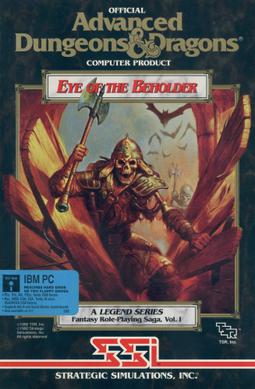
Eye of the Beholder is a role-playing video game for personal computers and video game consoles developed by Westwood Associates. It was published by Strategic Simulations, Inc. in 1991, for the MS-DOS operating system and later ported to the Amiga, the Sega CD and the SNES. The Sega CD version features a soundtrack composed by Yuzo Koshiro and Motohiro Kawashima. A port to the Atari Lynx handheld was developed by NuFX in 1993, but was not released. In 2002, an adaptation of the same name was developed by Pronto Games for the Game Boy Advance.

Curse of the Azure Bonds is a role-playing video game developed and published by Strategic Simulations, Inc (SSI) in 1989. It is the second in a four-part series of Forgotten Realms Advanced Dungeons & Dragons Gold Box adventure computer games, continuing the events after the first part, Pool of Radiance.
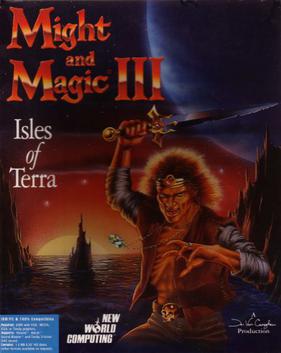
Might and Magic III: Isles of Terra is the third game in the role-playing video game series Might and Magic. Released in 1991, it is the predecessor to Might and Magic IV: Clouds of Xeen and the sequel to Might and Magic II: Gates to Another World. A Sega Genesis version was developed, but never released.

Darklands is a historical fantasy role-playing video game developed and published by MicroProse in 1992 for MS-DOS. The game is set in the Holy Roman Empire during the 15th century. While the geographic setting is historically accurate, the game features many supernatural elements.
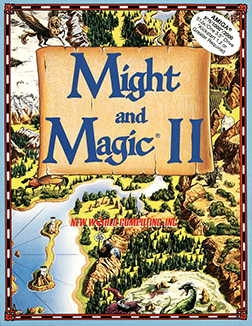
Might and Magic II: Gates to Another World is a role-playing video game developed and published by New World Computing in 1988. It is the sequel to Might and Magic Book One: The Secret of the Inner Sanctum.

Buck Rogers: Countdown to Doomsday is a role-playing video game set in the Buck Rogers XXVC universe. It was published in 1990 by Strategic Simulations for MS-DOS, Commodore 64, and Amiga. A Sega Genesis version was released in 1991. Matrix Cubed is the 1992 sequel.

For Interplay's later SNES game, see J.R.R. Tolkien's The Lord of the Rings, Vol. I.
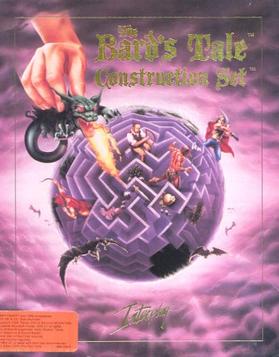
The Bard's Tale Construction Set is a computer game creation system that allows for the creation of dungeon crawl video games based on the Bard's Tale game engine. It was developed by Interplay Productions in 1991 and distributed by Electronic Arts. It was released for the Amiga and MS-DOS.
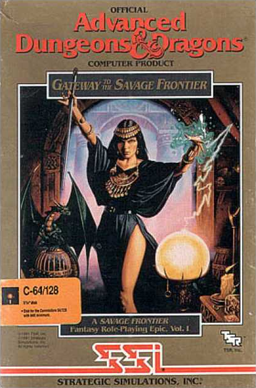
Gateway to the Savage Frontier (1991) is a Gold BoxDungeons and Dragons computer game developed by Beyond Software and published by SSI for the Commodore 64, PC and Amiga personal computers.
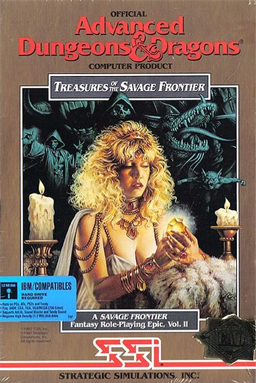
Treasures of the Savage Frontier (1992) is a Gold Box Dungeons and Dragons role-playing video game. It was developed by Beyond Software and published by SSI for the Amiga and DOS.

Wizardry VII: Crusaders of the Dark Savant is the seventh title in the Wizardry series of role-playing video games by Sir-Tech Software, Inc., preceding Wizardry 8 and succeeding Wizardry VI: Bane of the Cosmic Forge. It is also the second entry in the 'Dark Savant' trilogy. The game was published in 1992 by Sir-Tech, originally developed for DOS. In 1996 it was remade into Wizardry Gold, designed to work on Windows and Macintosh, and distributed by Interplay.
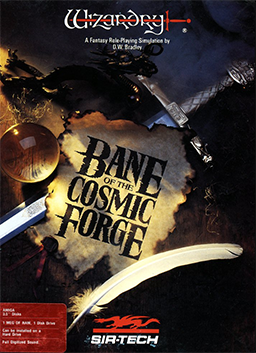
Wizardry VI: Bane of the Cosmic Forge is the 6th title in the Wizardry series of role-playing video games. It was the first in the trilogy surrounding the Dark Savant, which was followed by Wizardry VII: Crusaders of the Dark Savant and Wizardry 8. It was developed by Sir-Tech Software, Inc. and was released on the Amiga and DOS platforms in 1990 by the same company, and for the Super Famicom in Japan in 1995 by ASCII.

Puggsy is a 1993 puzzle-platform game developed by Traveller's Tales and released by Psygnosis on the Mega Drive and Mega-CD consoles, as well as the Amiga home computer. Puggsy is the name of the title character, an orange space hopper–like alien who landed his spaceship on The Planet, intending to return home until his spaceship was stolen by the raccoon natives of the planet.

SwordThrust is an interactive text adventure game for the Apple II, created by Donald Brown and published by CE Software in 1981. It consists of seven separate adventures and is the commercial successor to Brown's Eamon (1980).
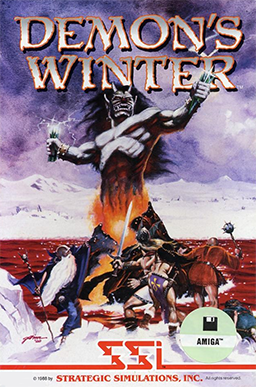
Demon's Winter is a role-playing video game developed and published by Strategic Simulations in 1988. It is a sequel to SSI's 1986 Shard of Spring, set two hundred years after the events of the original, featuring a game world 32-times the size of the previous one.
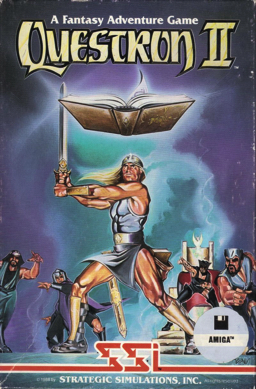
Questron II a 1988 role-playing video game published by Strategic Simulations for the Apple II, Apple IIGS, Atari ST, Commodore 64, IBM PC, and Amiga. It is the sequel to 1984's Questron. The story and original design is credited to Quest Software, the programming and artwork is credited to Westwood Associates.
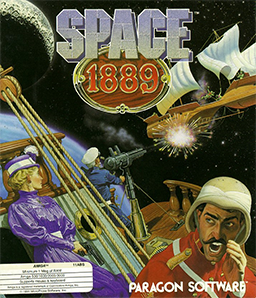
Space: 1889 is an adventure game developed by Paragon Software and published in 1990 for Amiga, Atari ST, and MS-DOS.

MegaTraveller 1: The Zhodani Conspiracy is a 1990 space science fiction role-playing video game based on the Traveller series and was produced by Game Designers' Workshop licensee Paragon Software for Amiga, Atari ST, and MS-DOS. The game is set within the Official Traveller Universe and features character creation and other aspects of game mechanics compatible with prior Traveller products. The player controls up to five ex-military adventurers whose objective is to save their civilization, the Imperium, from a conspiracy instigated by the Zhodani, a rival spacefaring race, and aided by the actions of a traitor named Konrad Kiefer. Gameplay features real-time planetary and space exploration, combat, trading, and interaction with various non-player characters in eight solar systems containing twenty-eight visitable planets.




















